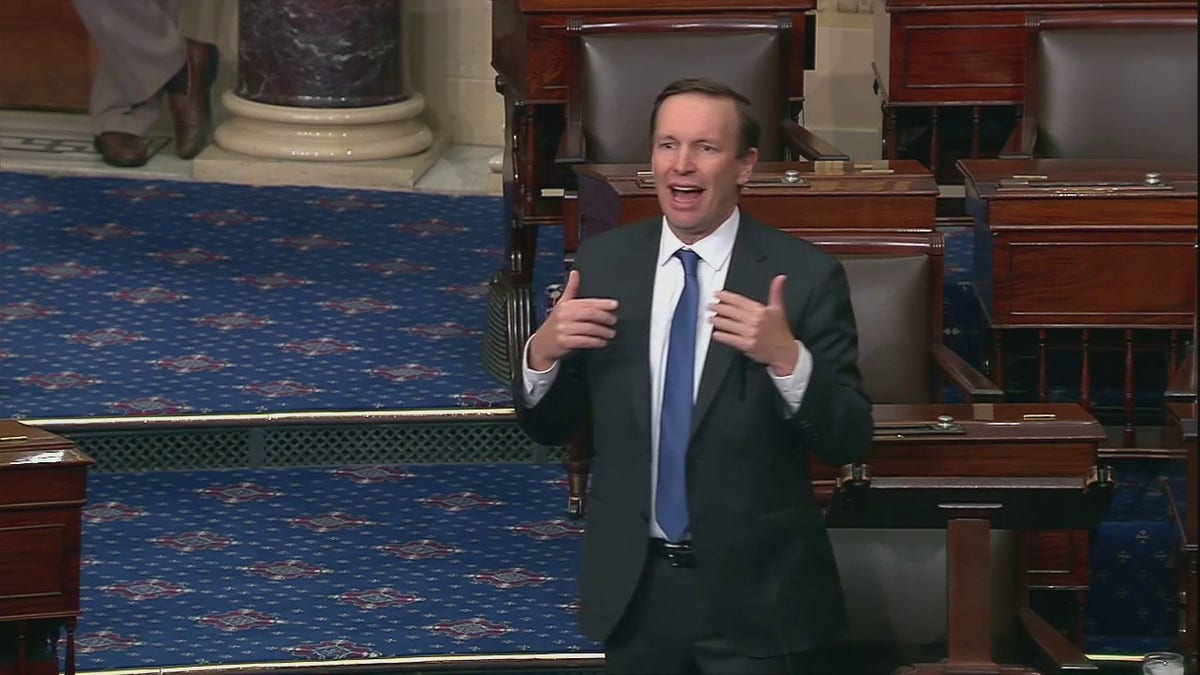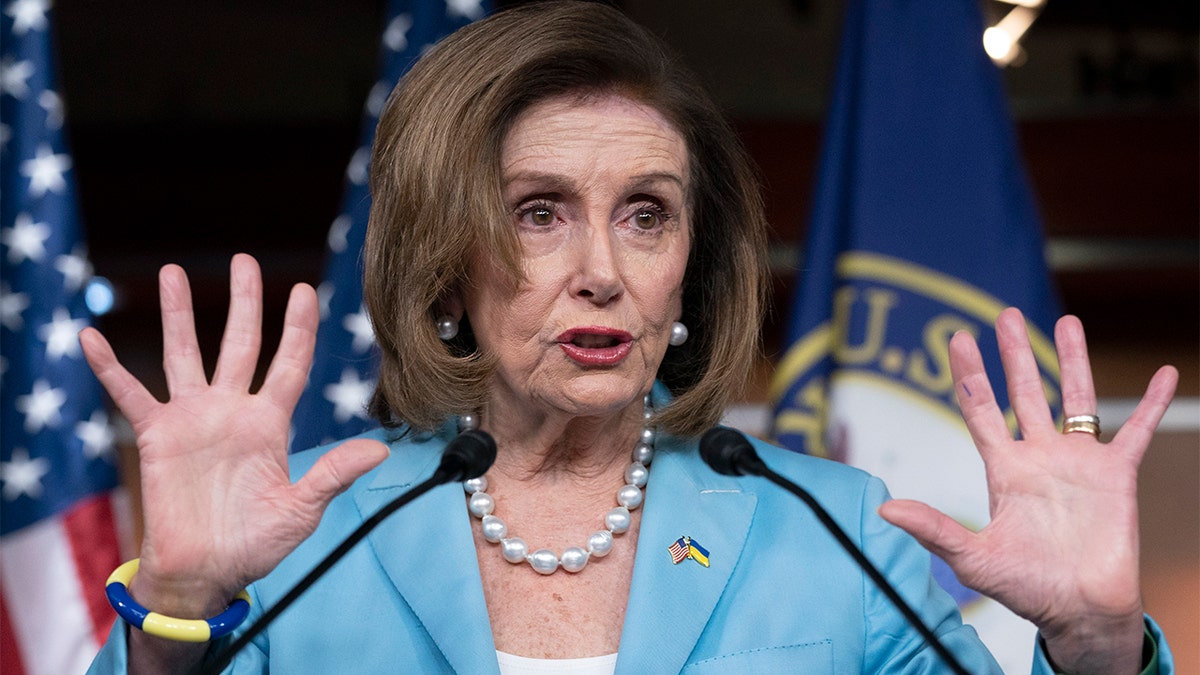Bipartisan group of senators reach tentative deal on gun control
Fox News' Lucas Tomlinson reports the latest on the deal, which boosts mental health and school security, from the White House.
It is notable that the coalition of bipartisan Senate negotiators put out a general framework of their tentative agreement to curb the scourge of firearms violence over the weekend.
That’s because they are racing against the clock to get something done in the shadow of mass shootings in Texas, Oklahoma and New York. If Congress does act shortly after these tragedies, it will have done so in record time.
The July 4 recess approaches in less than two weeks. Lawmakers who are eager to get an agreement doubt they can leave Washington without a vote on a bill to curb gun violence.
This gives them until the end of next week to advance this through the Senate and House.
The bipartisan group hopes to put out bill text in the next couple of days and begin to socialize it with senators.
First, the math:

Sen. John Cornyn, R-Texas, questions Supreme Court nominee Ketanji Brown Jackson during a Senate Judiciary Committee confirmation hearing on Capitol Hill in Washington, Tuesday, March 22, 2022. (AP Photo/Andrew Harnik)
It is key that the bipartisan group has ten GOP members. If that group sticks together and all Democrats are yeas, that gets the Senate to the magical 60 vote threshold. Sixty yeas are necessary to overcome two rounds of filibusters: one filibuster to start debate on the bill and then another filibuster on the back end to conclude work on the bill. Final passage in the Senate would just need 51 yeas.
And even if they had bill text now and filed cloture (to overcome a filibuster to begin debate), the absolute earliest a procedural vote would come is Wednesday. The Senate clocks would also delay conclusion of debate on this bill until early next week – if they started immediately and conservative opponents made the Senate run all possible parliamentary traps.
Tha

Sen. Chris Murphy, D-Conn., spoke from the Senate floor after the school shooting in Uvalde, Texas. (Senate Pool Video)
It means, if everything runs smoothly, the House wouldn’t get the bill until the middle of next week at the earliest.
In short, they are slammed for time. Or, the House and Senate could delay the beginning of the 4th of July recess. That’s scheduled to begin at the end of the month.
Of course, this scenario presumes that everything goes swimmingly. And few things on Capitol Hill ever do.
Conservative and liberal lawmakers at the margins of both the Republican Conferences and Democratic Caucuses could oppose this plan. Conservatives will contend the bill goes too far. They just aren’t willing to touch any firearms-related legislation at all. In fact, it helps those members with their base to stand up to any effort to cut into Second Amendment rights. A number of ultra-conservative members are already attacking Republican senators who worked on the Senate package.
Liberal Democrats may also bolt, protesting that the measure doesn’t go far enough. They will demand stricter controls if not outright bans on high-capacity weapons, plus, comprehensive background checks.
So, it’s far from a done deal that all 50 senators who caucus with the Democrats are on board. It’s possible the coalition may need to expand beyond the current universe of ten Republicans in order to hit the all-important 60 vote threshold to break filibusters on this bill.
And then, there is the House of Representatives.
Here is the current breakdown in the House: 428 members. 220 Democrats. 208 Republicans. Seven vacancies.
That means Democrats can only lose five on their side and still prevail on a vote without assistance from Republicans. Six Democratic noes would produce a tie vote in the House. By rule, a tie vote fails in the House.
House Democrats lost two of their members last week when they advanced the sweeping gun control measure on the floor: Reps. Jared Golden, D-Maine, and Kurt Schrader, D-Ore. Golden thought last week’s House bill was too partisan. But Golden signaled he admired the bipartisan Senate approach on this issue and could be in play to vote yes.
The House plan also picked up yeas from five Republicans: Reps. Fred Upton, R-Mich., Anthony Gonzalez, R-Ohio, Brian Fitzpatrick, R-Penn., Chris Jacobs, R-N.Y., and Adam Kinzinger, R-Ill.
The House gun package tilted far to the left. So it’s possible the more moderate, bipartisan, Senate plan could attract a wider universe of Republican yeas.
MARCH FOR OUR LIVES RALLIES PUSH FOR GUN CONTROL AFTER MASS SHOOTING
Maybe.
But the House could face the same problem with liberals objecting. That’s because the package falls far short of their goals. There is significant potential for a chunk of progressives to reject this in the House because it doesn’t go as far as they want.
That said, House Speaker Nancy Pelosi, D-Calif., made a tactical decision last week to put the more liberal bill on the floor. That maneuver gave left-wing Democrats the chance to vote for a bill which aligned with their wishes. Now Pelosi can go back to that same group and ask that they accept a slimmed-down bill which stands the chance of passage in the Senate and can become law. Pelosi could argue that they are on the precipice of passing significant legislation related to firearms for the first time in decades. Don’t let the perfect be the enemy of the good. President Biden suggested as much in his response to the bipartisan framework.

Speaker of the House Nancy Pelosi of Calif., speaks during a news conference, Thursday, May 19, 2022, on Capitol Hill in Washington. (AP Photo/Jacquelyn Martin)
It should surprise no one that the success or failure of this bill will boil down to the math. But time is just as crucial.
Again, the hope by supporters of this measure is to pass it through both the House and Senate between now and the end of next week. Consider the fact that the Newtown massacre unfolded in December, 2012. It took the Senate took until April of 2013 just to have show votes – all designed to fail – in response to the carnage at Sandy Hook.
CLICK HERE TO GET THE FOX NEWS APP
There was never any significant legislative response to the litany of other mass shootings over the past few decades. Democrats engineered a sit-in on the House floor in 2016 after the shooting at the Pulse nightclub in Orlando, Fla. There was nothing which advanced in Congress following Parkland. The same with the shootings of former Rep. Gabrielle Giffords, D-Ariz., and House Minority Whip Steve Scalise, R-La.
Passing something significant to curb gun violence would mark the first time in years Congress has truly addressed this subject with dispatch. Just weeks after such horrific events.
So for this round, the math is not only critical. But time is also paramount.


